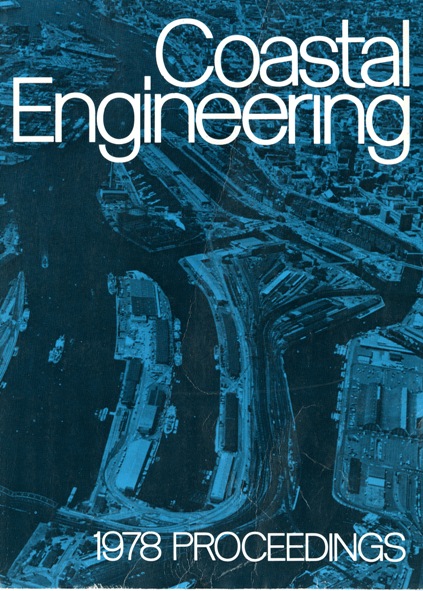Abstract
Cooling water from a power generating station in Eastern Canada is pumped to an outfall and distributed into the ocean through discharge ports in the sidewalls of a diffuser cap. The cap is essentially a shell-type structure consisting of a submerged circular cylinder 26.5 ft in diameter and 14 ft high. It is located in 25 ft of water at low water level and 54 ft at high water level. Horizontal forces, vertical forces and overturning moments exerted by waves on a 1:36 scale model of the diffuser cap were measured with and without cooling water discharging from the outfall. Tests were run with regular and irregular waves producing both non-breaking and breaking wave loads on the diffuser cap. The overturning moments measured on the diffuser cap were up to 150 percent greater than those on a solid submerged cylinder sealed to the seabed. Unlike sealed cylinders, all of the wave loads measured on the relatively open structure reached maximum values at approximately the same time. The largest wave loads were measured on the diffuser structure when it was subjected to spilling breakers at low water level. For a given wave height, the spilling breakers caused wave loads up to 100 percent greater than those due to non-breaking waves.
Authors retain copyright and grant the Proceedings right of first publication with the work simultaneously licensed under a Creative Commons Attribution License that allows others to share the work with an acknowledgement of the work's authorship and initial publication in this Proceedings.

